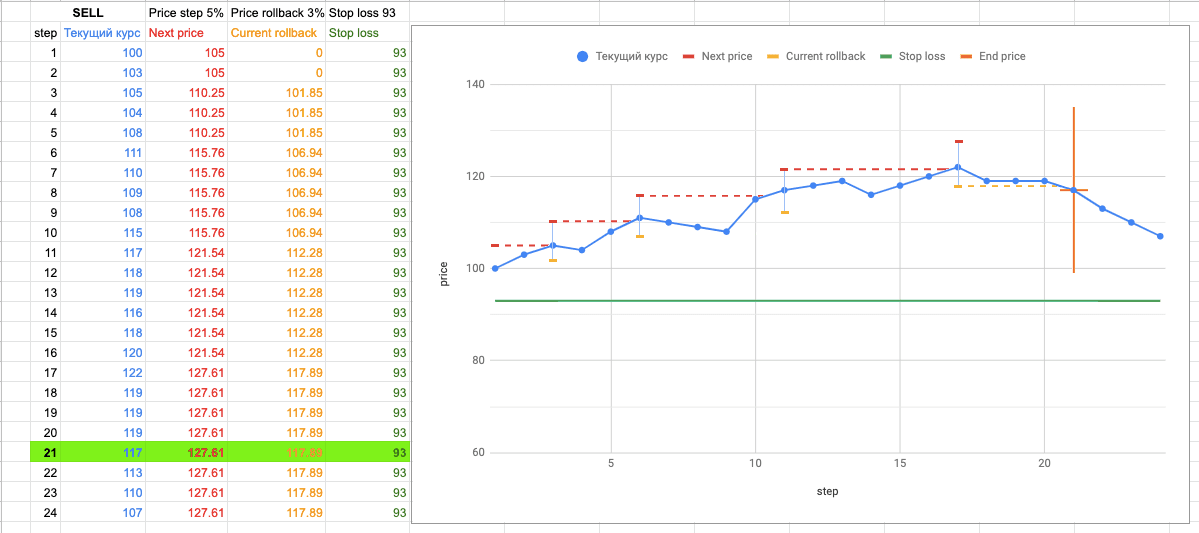

Trailing

Asymmetric Trailing Tool
Trailing stop / stop-loss orders.
General
With this strategy, we follow the price, 4 variables are involved here:
- Current price: current price.
- Current rollback: this is a floating price upon reaching which we fix the position and place an order. It is configured by the parameter Price rollback% . We cannot pick up a price lower than the original (in this case 100) at Current rollback , for this there is a parameter Stop loss .
- Next price: this is a floating price, upon reaching which we move Current rollback to Current price and push back Next price from Current price . It is configured by the parameter Price step % .
- Stop loss: this is the lower threshold to which the price can go down, and then we will place orders so as not to lose more. It is set at a specific price, never changes and is optional.
Let's look at an example
Let's say we bought some coins at the rate of 100, and we want to sell them at a profit. Now the course is 100, we expect to get more. To minimize losses, set Stop loss 93, if the price drops to this threshold, we will sell coins. Price step to 5%, that is, the first Next price will be at 105. Price rollback to 3% until the price reaches the first Next price (in this case 105) Current rollback not active.
At a price of 103 this is only 3% of the course, we do not sell or increase anything (we are waiting for 5%, the price is 105). As soon as the price reaches 105, we tighten the lower border. Because rate has now jumped to 105 (see the figure below), then the lower border will be already 101.85 (3% of Current
price : 105). The current rate is 105, but if it drops to 101.85, then we will sell (but we will already be in the black). The difference between 105 and 101.85 is 3%, if the rate rises higher, we will increase again, but we are already waiting for the mark in 110.25 (5% of 105 ) .
The next step of the chart is the rate 104. The price has fallen, but we do not move the lower border on the fall, we change only on the growth, Current rollback 101.85 remains. Price jumped to 111 - Current rollback pulled up to 106.94 (3% of Current price ), expect Next price at 115.76 (5% of Current price ) etc.
Here the graph depicts clearly in steps, how the algorithm works.

Also, if you draw a graph, you get a corridor with a given offset.

Here we originally planned to sell at 105 and sold at 117. In this case, the upper threshold was at 122 and in the end we deviated from the maximum profit in 4.09%.
When Asymmetric Trailing if set Price step minimum and Price rollback more Price step , then we will be more susceptible to statistical noise and will not be able to get to the best price.
Purchase
To buy, the algorithm becomes mirrored:

By stop loss

Conclusion
Fine-tuning this tool for each pair individually will lead to the most profitable deals, since you can take into account the features for each of them and choose the best strategy.

2019 All rights reserved
